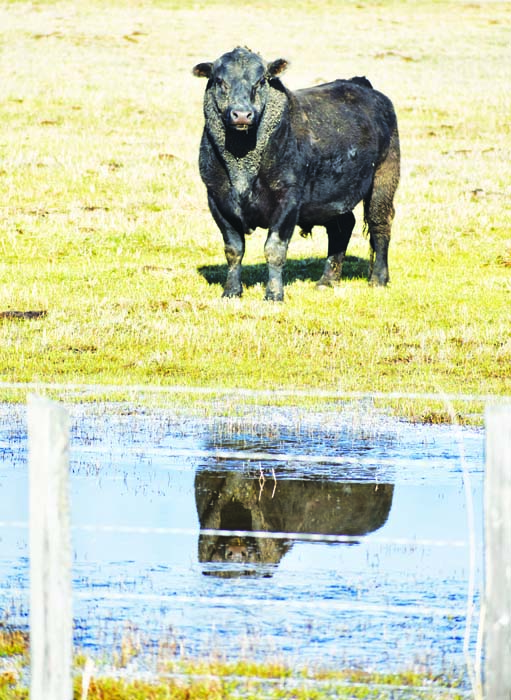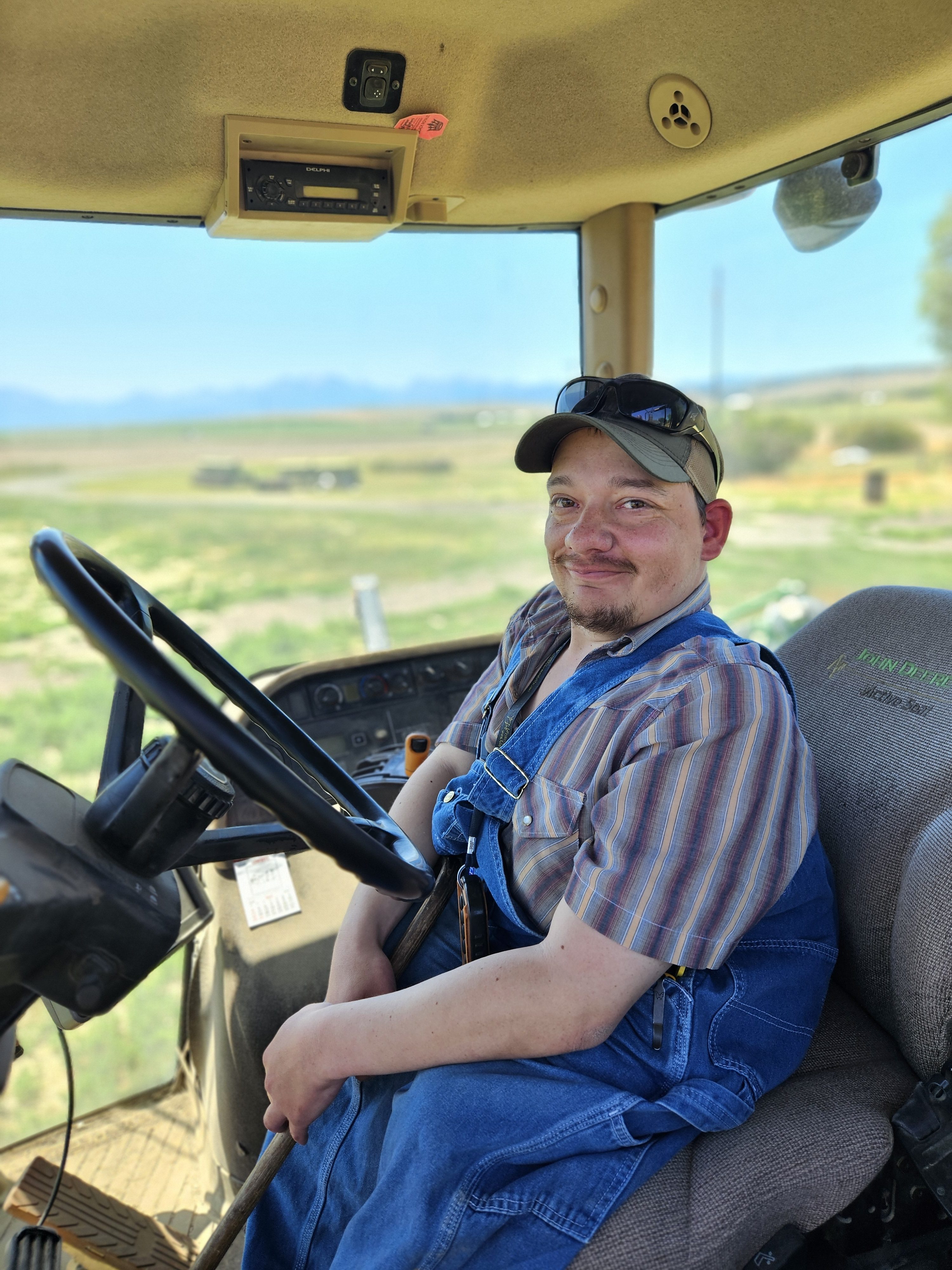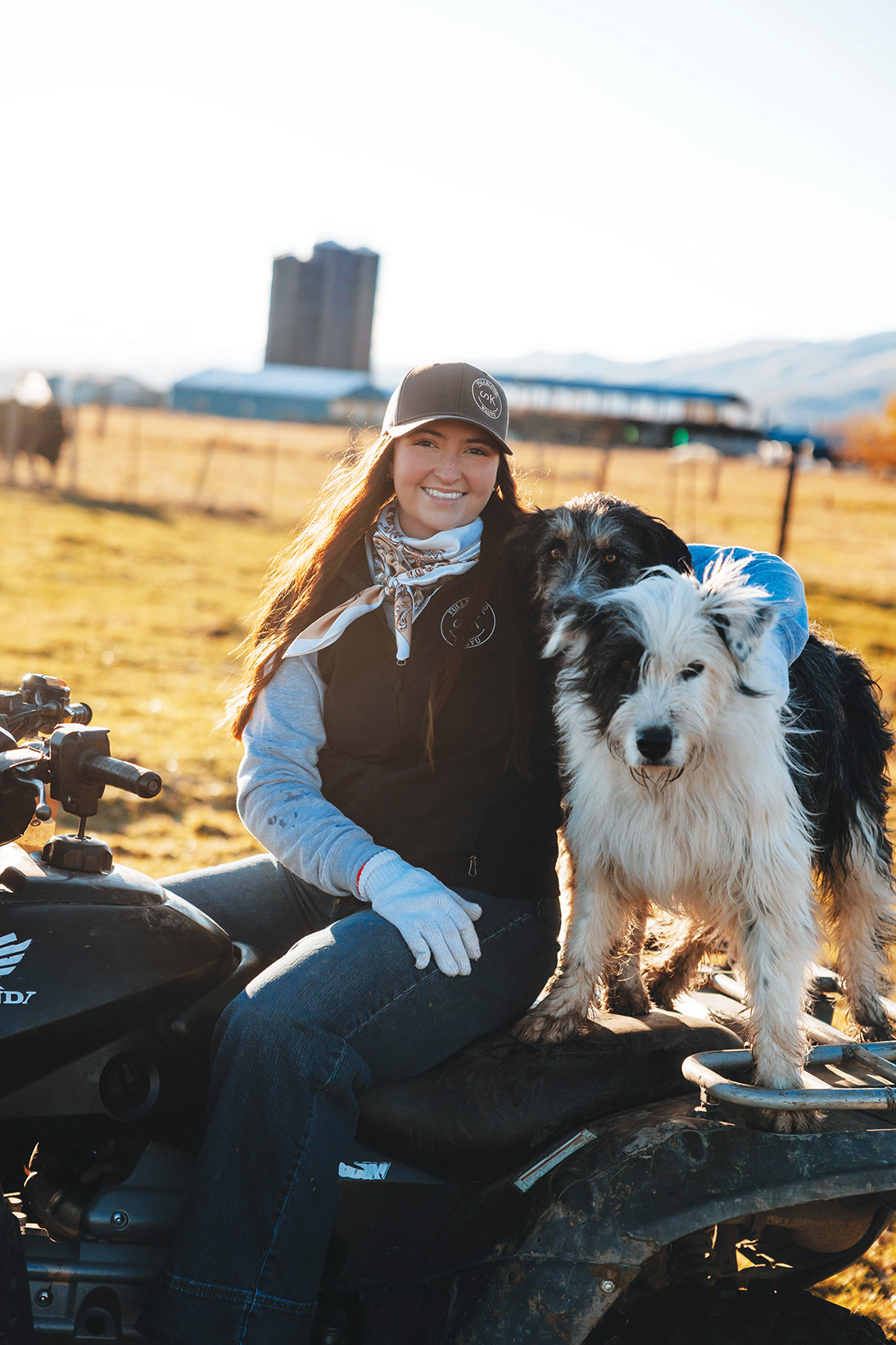DEQ schedules open house on Powder River Basin bacteria reduction plan
Published 7:59 am Tuesday, January 9, 2024

- The Oregon Department of Environmental Quality is working on a plan to reduce bacterial concentrations in streams in the Powder River Basin. The agency contends that livestock manure is a major source of fecal bacteria.
A state agency has scheduled a public open house Feb. 1 in Baker City to answer questions about a plan to lower bacteria concentrations in Baker County streams that has proved controversial because the agency largely blames ranching and farming for the pollution.
Trending
The Oregon Department of Environmental Quality (DEQ) set the open house from 4 p.m. to 7 p.m. at the Baker County Extension Service Office, 2600 East St., just north of Campbell St.
Residents can attend at any time during the three hours.
DEQ employees will be available to answer questions about the Powder River Basin TMDL — Total Maximum Daily Load.
Trending
The process, outlined in the federal Clean Water Act, identifies streams or other bodies of water that exceed federal standards for certain pollutants.
The Powder River Basin TMDL focuses on one pollutant — fecal bacteria that could potentially sicken people or animals that are in contact with water in streams in the basin through recreation such as swimming or fishing.
That basin includes most of Baker County.
Sections of more than a dozen streams in the Powder River Basin exceed the federal standard for bacteria under the Clean Water Act, according to DEQ data collected over the past 25 years or so.
These include the Powder and Burnt Rivers, the North Powder River, Eagle Creek, Dixie Creek, Pine Creek (in eastern Baker County), as well as Unity, Thief Valley, Phillips and Brownlee reservoirs.
“Fecal contamination of water poses serious risk of illness for people, livestock, and wildlife,” according to a DEQ fact sheet about the Powder Basin TMDL. “Adults and children may be at risk from swimming, fishing, rinsing hands, playing along the riverbanks, or eating fresh produce irrigated with the water. Livestock and wildlife may be at risk from drinking fecal contaminated water.”
Although the current proposed TMDL deals only with bacteria, DEQ’s draft plan notes that other TMDLs, dealing with other pollutants such as high water temperatures, dissolved oxygen levels and sediment, will follow.
Local concerns
In addition to scheduling the Feb. 1 open house, DEQ has reopened the public comment period about the Powder Basin plan.
Doni Bruland, Baker County’s natural resources director, asked DEQ to extend the public comment period due to concerns that she and others have about the potential effects the tactics that will likely be necessary to reduce bacteria levels and thus address the purpose of the TMDL.
Specifically, Bruland disputes DEQ’s estimate that about 90% of the bacterial load in the Powder Basin stems from ranching and farming.
According to DEQ, the agency’s “source assessment for the Powder Basin TMDL found that the primary pathways for bacteria to enter waterways are through erosion and runoff from pastures, direct deposition of livestock manure, and transport and delivery of sediment and organic matter containing bacteria.”
The agency has measured high bacteria levels in the basin since the late 1990s, according to a DEQ fact sheet, and samples collected from the same sources between 2000 and 2019 didn’t show declines in bacteria levels.
DEQ doesn’t identify specific sources of bacteria, such as individual properties.
Curtis Martin, a cattle rancher and member of the 10-member advisory committee for the Powder Basin TMDL, contends that DEQ can’t justify its estimate that 90% of the bacterial contamination stems from agriculture unless the agency has done DNA studies to distinguish between bacteria that comes from wildlife, such as deer and elk, rather than cattle and other livestock.
DEQ has not done those genetic studies.
The agency does address Martin’s claim in its fact sheet.
“Fecal bacteria, like E. coli, comes from human, pet, livestock and wildlife manure,” the fact sheet states. “In the Power River Basin, cows are the dominant livestock type and outnumber people (and their pets) five to one, according to the USDA Agricultural Census Survey and US Census. Cattle numbers in the basin are four times higher than the most recent statewide wildlife counts by Oregon Department of Fish and Wildlife of all species combined. Additionally, water quality data shows the highest concentrations of E. coli in the Powder River Basin generally occurred downstream of areas with higher densities of irrigated pastures that are seasonally grazed by cattle. Wildlife, pets and people also contribute bacteria, but at lower rates than cattle.”
The fact sheet also states that DNA tracing of fecal bacteria “is not an EPA-approved method for TMDL development. DNA testing is not needed to determine that cattle access to waterways and irrigation practices that carry manure in runoff to streams contribute significant amounts of bacteria to multiple Powder River Basin waterways.”
According to the fact sheet, after steps have been taken to reduce bacteria levels, “DNA testing at specific locations may help target bacteria reduction efforts.”
Bruland and Christina Witham, a county commissioner, have also objected to DEQ attributing the bulk of the bacteria concentrations to agriculture.
Bruland said she has offered to DEQ to apply for grants, through the county, that would help pay for five years of additional testing for bacteria levels — including DNA analysis to distinguish between sources of fecal bacteria.
DEQ is not proposing to delay the Powder Basin TMDL for that period.
Bruland said she’s concerned that the DEQ’s water quality management plan, a document intended to deal with pollution issues identified in the TMDL, will require farmers and ranchers to take expensive steps, such as reducing grazing, to meet the targets for reducing bacteria levels.
The logic seems inescapable, Bruland said — if DEQ concludes that livestock manure is the main source of bacteria in the basin, then addressing that source, in some fashion, is the only way to reduce bacteria levels.
And although projects such as building watering troughs away from streams, as has been done in parts of the Baker Valley, can keep cattle from defecating directly in streams, Bruland points out that the animals can hardly avoid producing poop.
She worries that the only way to reduce bacteria might be to reduce the size of cattle herds — something that could doom some ranches.
“That uncertainty is tough,” Bruland said. “This is just such a critical issue. It could be such a huge impact.”
According to DEQ documents, the water quality management plan for the Powder Basin “will require those that contribute bacteria to the basin’s waterways to apply controls to reduce those contributions. These practices are straightforward and include manure and pasture management, irrigation improvements, and streamside management to prevent erosion and runoff from fields. Action will not be needed everywhere in the basin, and significance of action will vary depending on specific conditions and practices already in use.”
The timeline for reducing bacteria loads is also not certain.
According to DEQ’s fact sheet, no immediate actions would be required to reduce bacteria levels after the TMDL is approved.
“The length of time until measurable changes in bacteria levels in basin streams will be seen depends on the rate at which irrigation modernization, pasture and livestock management, and other conservation projects can be funded and put in place,” the fact sheet states. “Based on rates of progress in the nearby Malheur Basin (where DEQ approved a TMDL in 2010 for bacteria and other pollutants), DEQ estimates bacteria levels can be reduced by 50% in 10-15 years and bacteria standards can be met in 20-30 years.”
But Bruland said the likelihood that the TMDL won’t have immediate effects on ranchers and farmers, or even within, say, a decade, is of little consolation for operations that have been in business, in some cases, for more than a century.
Nor is the timeframe for when bacteria reductions are required the only concern, Bruland said.
How big those reductions would need to be could also be vital, she said.
Sections of some streams would require reductions in bacterial load of 40% to 95% to meet water quality standards, according to the draft TMDL for the Powder Basin.
Those figures are based on the criteria of what DEQ calls “water contact recreation” — swimming and other activities that could expose a person to waterborne bacteria.
According to DEQ, water contact recreation is the “most sensitive beneficial use” in the Powder Basin.
Bruland said that standard requires a larger reduction in bacteria than others. She questions whether water contact recreation is the appropriate criterion, given the lack of evidence that fecal bacteria have caused widespread illness among people in the Powder Basin.
County officials seek to slow process
DEQ had planned to finish the Powder Basin TMDL during 2023.
Last summer, Bruland wrote a letter to DEQ and Gov. Tina Kotek asking the agency to schedule a public hearing on the topic in Baker City, and calling for DEQ to assess the cost/benefit ratio of reducing bacteria levels and to continue testing water samples from around the basin for at least five more years. Bruland asked the DEQ to include DNA analysis to determine the source of the bacteria, whether from livestock or wildlife.
Although DEQ officials haven’t agreed to postpone the process for five years, the agency did schedule a public hearing in Baker City on Aug. 15, 2023, and extended the public comment period through Aug. 31.
More than 100 people attended the Aug. 15 hearing. Several local ranchers questioned DEQ’s data, and in particular attributing most of the bacteria load to agriculture.
Bruland continued to push DEQ to extend the public comment period, and in November agency officials announced they would do so.
The public comment period continues through Feb. 9. Comments can be mailed to powderTMDL@deq.oregon.gov, given at the Feb. 1 open house, or mailed to: Oregon DEQ, Attn: Alex Liverman/Watershed Management, 700 NE Multnomah Street, Suite 600, Portland, Oregon 97232-4100.









